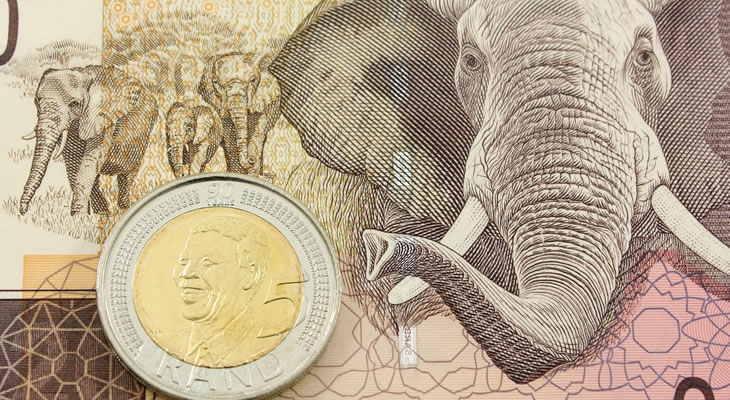The Pound South African Dollar exchange rate has fluctuated widely this week. Federal Reserve jitters have weighed on ZAR demand, but both the UK and South Africa saw solid inflation reports this week, which have helped analysts to paint a picture on longer-term inflation outlooks for the nations. GBP ZAR currently trends just below the week’s opening levels of 17.33.
Pound (GBP) Inflation Impresses but BoE Tightening Bets Remain Low
The UK is in a unique position this year – not just because it voted Brexit but also because of how that vote has impacted the Pound’s value.
As Sterling’s value plummeted in recent months to multi-year lows, prices for high street goods will inevitably be feeling the squeeze in the coming months as producers and suppliers avoid losses by hitting consumers in the pocket.
With each passing UK Consumer Price Index (CPI) report this becomes increasingly evident and analysts are widely anticipating further inflation spikes in the coming months.
Tuesday saw the publication of November’s inflation results, which came in at a higher-than-expected 1.2% year-on-year and a high score of 1.4% in its yearly core print.
Typically, this would encourage the Bank of England (BoE) to move towards monetary policy tightening. However, the BoE has repeatedly reminded markets that inflation caused by low GBP value would not pressure them to hike rates.
This has made investors hesitate to buy into the Pound despite the much higher inflation outlook.
South African Rand (ZAR) Benefits from Solid Inflation and Tourism Hopes
Despite the imminence of December’s Federal Reserve meeting holding back demand for risk-correlated currencies and emerging-market currencies like the Rand, ZAR has been resilient this week and has easily held GBP ZAR below opening levels.
This is partially due to generally warm market sentiment towards the Rand as a year of comparatively strong performance comes to a close. The Rand has been one of the best-performing emerging market currencies in 2016 and has gained 31.2% against the Pound.
South African inflation has also been printing sturdily, with Wednesday’s November inflation rate result coming in at 6.6% year-on-year, as most analysts projected, and improving from 6.4%.
Pound South African Rand Long-Term Forecast: Uncertainty Ahead in UK’s Inflation Outlook
The long-term outlook for the Pound South African Rand exchange rate could actually continue its current generally downside bias with high uncertainty still ahead for the UK economy.
Analysts are hoping the Bank of England (BoE) may change its stance on tightening monetary policy in reaction to inflation if UK CPI reaches 3.0% in the mid to long-term future – which is certainly possible if Sterling value impacts high street prices in 2017 as expected.
However, inflation (as well as many other factors in the UK economic outlook) remain uncertain. With the UK government expected to begin the process in March 2017 and many UK economic results defying expectations, the mid to long-term future lacks the clarity needed for investors to be too confident in any form of BoE tightening.
The South African Rand, on the other hand, is likely to round off a solid year of performance with generally solid market sentiment.
SA inflation is likely to increase again in the coming months with the festive season ahead and South Africa’s tourism expected to be strong in December.
As a result, even if forex traders begin to expect a more bullish US Fed rate hike cycle in 2017, the Rand may remain resilient if other economic factors like inflation are sturdy.
At the time of writing, the Pound South African Rand exchange rate trended in the region of 17.30, while the South African Rand Pound exchange rate traded at around 0.0577.


Comments are closed.